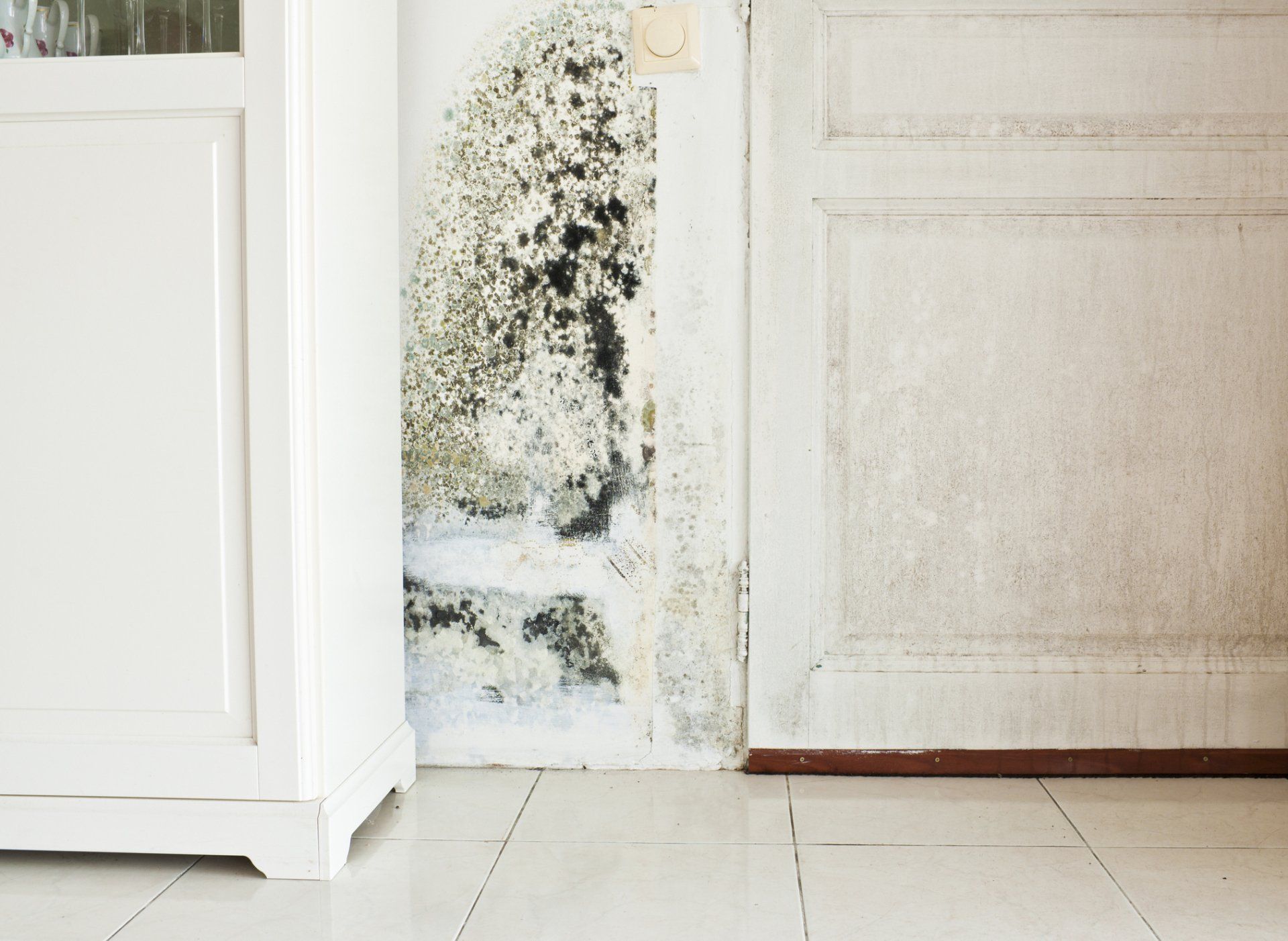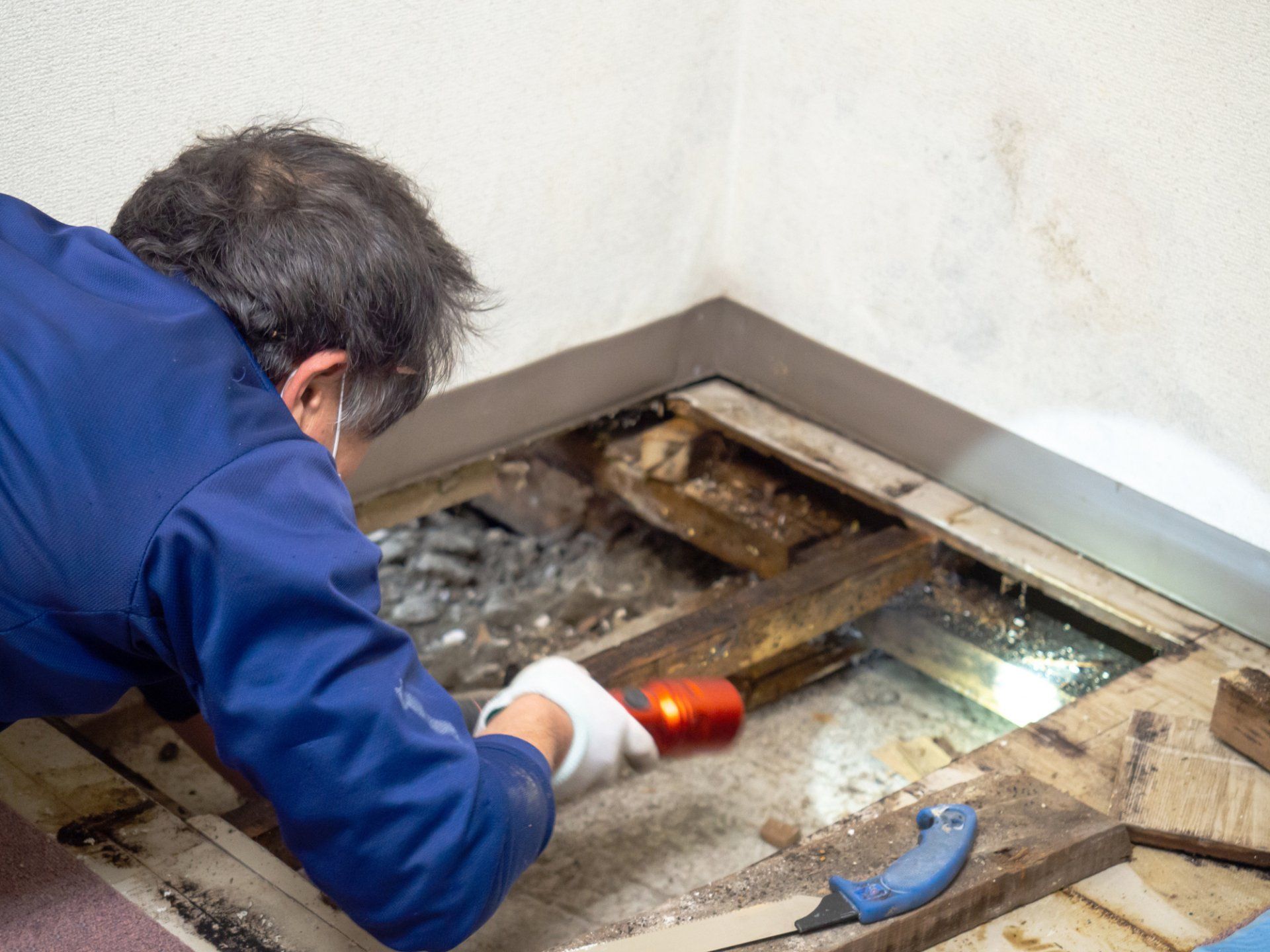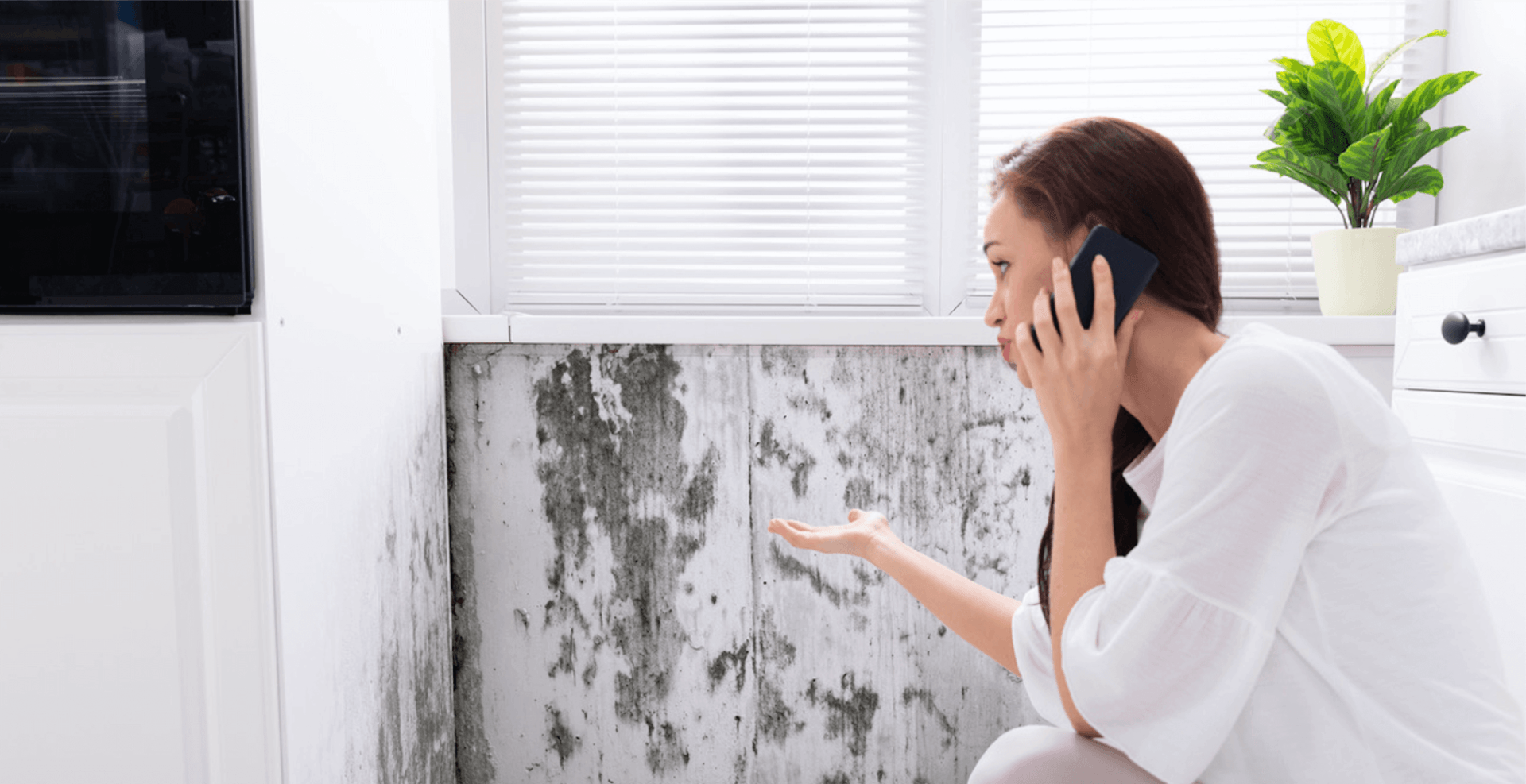CALL US NOW! 833-4-MOISTURE
Mold remediation protocols
Certification #PMRP0000033911 | PA HIC #PA161264
5 Major Warning Signs of Mold in Your Home
• Pets
• Doors & Windows
• Air Conditioning & Heating Vents
• Shoes & Clothing
Mold spores can survive even in dry environments and start to grow when they land on a moist surface. It can thrive in any season but prefers areas with very little light and plenty of moisture. Mold can grow in bathtubs, showers, sinks, laundry rooms, around windows, and near leaky pipes in your house. They especially like attics, crawl spaces, and basements.
Different types of mold spores can grow in the same area, and it is difficult to tell them apart by just looking at them. This guide will further explain the benefits of knowing which warning signs to look for to see if you have mold growth in your home.
What Can Happen if You Have a Mold Problem?
Some types of mold produce mycotoxins, which can cause health issues and allergic reactions such as skin tingling or itching if you come into contact with it.
Inhaling mold spores can cause breathing problems and a mold allergy. Your body will experience symptoms and respond by releasing histamines that result in:
- Nasal Congestion
- Sneezing and Coughing
- Watery Eyes
- Runny Nose
- Skin Irritation
- Headaches
- Sore Throat
- Asthma Attacks
- Chronic Lung Condition
- Coughing
- Fatigue
- Dizziness
- Blurred Vision
- Anxiety
- Neurological Problems
- Digestive Issues
- Joint and Muscle Pain
If you already have an existing respiratory problem such as asthma, or a weakened immune system, mold can cause more severe symptoms. Exposure to large amounts over time can occur in the workplace or at home and cause severe reactions.
Health symptoms of hazardous toxic mold may be linked with other adverse health problems, resulting in internal organ damage, cancer, and mental impairment.
Sometimes mold is difficult to spot, so the key is identifying the source of the humid environments they love. You can clean away the signs of household mold, but it will simply grow back again if you do not address the source.
Molds fall into three groups based on human responses:
• Allergenic Mold: These are rarely life-threatening for most people but can pose a problem for asthmatics.
• Pathogenic Mold: This type can generate infections such as Aspergillus fumigatus.
• Toxigenic Mold: Produce mycotoxins that can pose severe health problems to people with or without existing allergy conditions.
Since there isn’t a process to avert mold in your house all together, it is essential to know the signs and take steps to remove the mold along with primary sources of moisture immediately.
Subtle Signs You Have Mold In Your House
Molds come in a variety of textures and forms. They can be red, black, yellow, white, green, or blue and have a rough, smooth, or fuzzy appearance. If you think you may have mold in your house, keep an eye out for these five tell-tale signs.
1. Visual Indicators of Mold Growth
There are more than a thousand varieties of mold, and the one most commonly found in homes is black mold. It includes several different species of micro fungus that have a black or dark green appearance.
Mold is attracted to moist cellulose surfaces and is often found in water damage, leaky pipes, and previously flooded homes. Also known as Stachybotrys chartarum, black mold has unique sticky spores that adhere to surfaces easily.
This factor means it requires more force to make the spores airborne, such as slamming a door or window. However, black mold produces other contaminants more easily, namely, mycotoxins.
These tiny molecules travel through the air and can be detrimental to the health of animals, plants, and humans. Black mold is fast-growing, has a distinctive odor, and spreads within 48 hours of flooding or other mishaps.
Although black mold has a reputation as the source of toxic mold syndrome, it is actually no more or less dangerous than other types.
Some of these include:
- Penicillium has a blue or green appearance and grows on materials damaged by water.
- Aspergillus is an indoor mold that grows on building materials such as drywall, powdery food items, and dust.
- Cladosporium thrives in both warm and cool areas and is visible on wood surfaces and fabrics.
- Alternaria can grow indoors under leaky sinks, showers, or any damp place.
2. Invisible Mold with Musty Odors
Even if it is not visible, you may be able to smell mold in your house. An unpleasant damp, earthy odor can indicate its presence in unreachable places like inside the walls or under the floor. The smell originates from the microbial compounds that the mold releases as it grows.
Other molds that are likely to be smelled before seen include:
- Chaetomium has a cotton texture, and the color changes from white to brown and then black, commonly found in the basement, sink, or in a damp or leaky roof.
- Aureobasidium is brown, pink, or black and found on painted and wooden surfaces, and can cause eye, skin, and nail infections.
- Fusarium is an allergenic and toxigenic mold found in wallpaper, carpeting, and other fabrics after significant flood damage.
- Trichoderma produces mycotoxins that can damage building materials and contain an enzyme that destroys paper, wood, and textiles.
- Ulocladium is usually black and found in areas with high condensation or extreme damage, and it grows together with other molds that can cause severe reactions.
- Alternaria has a musty, ammonia odor with black spots or fuzzy spores and appears near windows, air conditioners, and chimneys.
3. Signs of High Humidity and Condensation
Humidity in the air can provide enough moisture for allergenic and toxigenic mold growth in your home. Cooking, showering, steam radiators, and stoves can all contribute to rising dampness levels in the air.
Ventilation problems near the intake to an HVAC system can also indicate humidity problems. The insulation and ducting of these systems can also get wet, and because the material can’t be cleaned, it should be removed.
Ways to prevent further damage from humidity and condensation include:
- Seal and Insulate All Ducts
- Exhaust Fans
- Dehumidifiers
- Vapor Barriers
4. Small or Hidden Water Leaks
Undetected leaks are common in bathrooms, basements, attics, and around pipes inside wall cavities. They are the leading cause of moisture build-up and the ideal home for many types of molds. Rust is an indication that condensation is present and should be insulated right away to prevent further damage.
Chimney crowns or caps can develop small cracks that allow water to enter and encourages mold to thrive. If the chimney is not ventilated correctly, condensation builds up and promotes mold growth. In many cases, small leaks cause damage that goes unnoticed long enough to cause harm.
Quickly fixing leaks and repairing the damage from excess water is the best way to prevent further problems and protect you and your family from allergenic and toxigenic molds.
5. Serious Water Damage
If flooding occurs in your home, it is critical to dry the areas within 24-48 hours to prevent mold from growing. When flood damage or standing water is not repaired right away, it can cause water stains, weak floorboards, bubbling paint on the walls, and peeling or cracking paint.
Flooding can also result in warped walls and possible structural damage, especially with porous materials such as carpeting and ceiling tiles. Discarding and replacing these items is the best option to prevent mold from growing out of control.
When You Should Call In the Professionals
In some cases, attempting to do the cleanup may cause more mold exposure throughout unaffected areas. The removal or cleanup can disturb the mold and cause spores to move through the air and create new issues.
If you have mold in your home that doesn’t go away despite your efforts, then it is time to call in the assistance of a professional with advanced testing equipment and plenty of experience.
Moisture Master Pros LLC can provide mold inspection and mold testing, removal, and remediation services.
Our mold remediation and removal professionals use specialized equipment to deliver advanced services such as:
- Thermal Imaging Assessments: We use infrared cameras to detect water damage and hidden moisture that leads to mold growth.
- Saturation Testing: Detection of airborne spore saturation levels helps determine how much cleaning and repair is needed to prevent mold re-growth. Saturation counts required to pass inspection should be less than 50% of the outdoor saturation or 1/3 the level stipulated by the AIHA (American Industrial Hygiene Association)
- Drone Inspections:
Specialized drone testing allows us to inspect hard-to-reach areas for any signs of moisture entering the premises and potential mold hot spots.
Our skilled team follows the IICRC (Institute of Inspection, Cleaning, and Restoration Certification) S-520 Standard and the Reference Guide for Professional Mold Remediation. We also recommend using an independent third-party industrial hygienist to make sure the mold is gone.
At Moisture Master Pros LLC, we focus on removing the cause rather than the symptoms of toxic and damaging molds. Along with safe, effective remediation, we help create an environment that will deter mold re-growth.
When you enlist our services for mold remediation in your home, you can be confident you live in a safe and healthy environment. We offer 24/7 emergency service and an evidence-based approach that is effective and affordable. Call us today!



Phone: 833-4-MOISTURE | Email: info@moisturemasterpros.com
Address:
150 Monument Road Suite 207 (Office 209) Bala Cynwyd, PA 19004
Business Hours
- Mon - Fri
- -
- Sat - Sun
- Appointment Only
Payment Options






Mold remediation protocols
Certification #PMRP0000033911
PA HIC #PA161264

